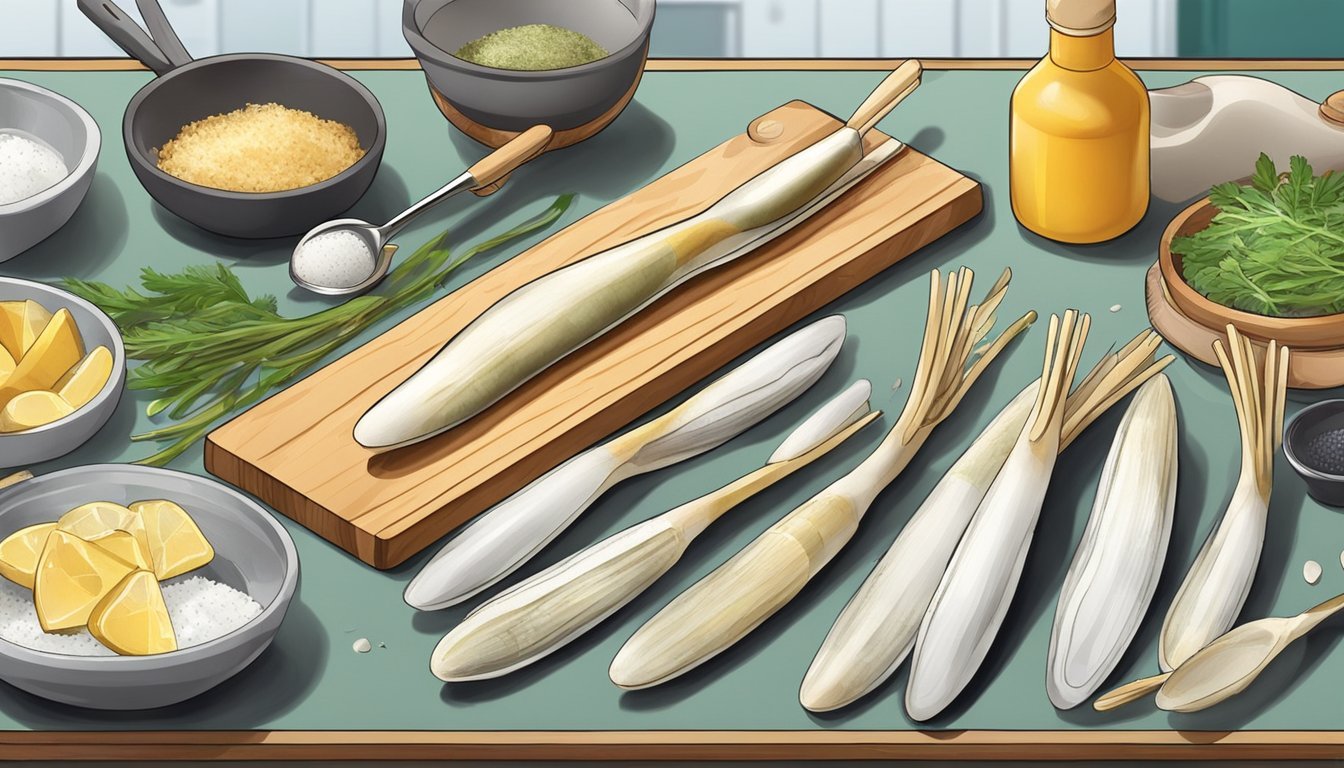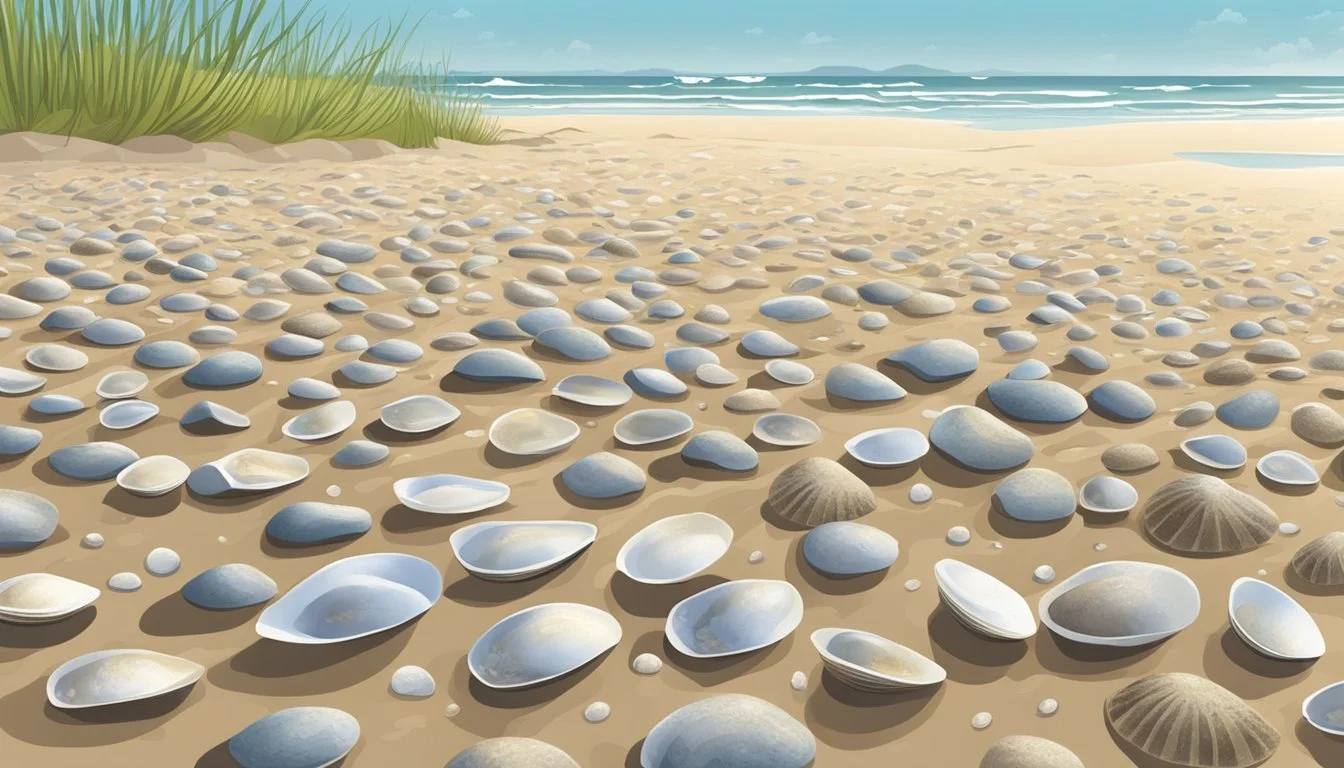Razor Clams Substitutes
Top Alternatives for Cooking and Recipes
Finding the perfect substitute for razor clams can save a dish when these delicate seafood treats are unavailable. Squid, with its similar taste and texture, offers a mild and slightly sweet flavor that can mimic the natural brininess of razor clams. This makes it a versatile substitute in various recipes like pasta or seafood salads.
Another excellent alternative is Manila clams, known for their tender meat and subtly sweet taste. They can seamlessly replace razor clams in most culinary applications, providing a similar mouthfeel and flavor profile.
Both squid and Manila clams ensure that you can still enjoy the essence of seafood in your dishes, whether you're whipping up a quick sauté or a hearty seafood stew. These substitutes ensure that missing out on razor clams doesn’t mean compromising on taste and quality.
Understanding Razor Clams
Razor clams are a unique type of shellfish known for their distinct elongated shell and rich, briny flavor. They thrive in coastal sandy shores, particularly on the Pacific coast.
Characteristics and Habitat
Razor clams, particularly the species Ensis directus, exhibit a long, narrow shell resembling an old-fashioned straight razor. These shells can reach lengths of up to 11 inches. Their siphon, which extends from the shell, helps them burrow into the sand where they spend much of their lives.
They inhabit sandy beaches and are often found along the Pacific coast during low tide. Razor clams prefer to reside in intertidal zones, making clamming a popular activity. The shell is fragile, requiring careful handling during harvesting.
Culinary Uses
Razor clams offer a unique flavor profile, with a briny taste and tender yet slightly chewy texture. Their sweet and mild flavor makes them suitable for various seafood recipes. Pacific razor clams are particularly prized in clam chowder and other clam recipes.
They can be cooked in a variety of ways, including grilling, steaming, and frying. Recipes often highlight their delicate taste without overwhelming it with strong spices. Popular dishes include clam chowder, sautéed razor clams, and razor clam fritters.
Harvesting Methods
Clamming for razor clams is typically done during low tide when they are easiest to find. Clammers often use specialized tools such as clam guns and shovels to extract them from the sand. The clams' siphon leaves a telltale dimple in the sand, indicating their presence.
Handling razor clams requires care to avoid breaking their delicate shells. After harvesting, it's crucial to transport them properly to maintain freshness. Thorough cleaning is needed to remove any sand and grit before cooking.
Preparing Razor Clams
Preparing razor clams involves a few crucial steps: cleaning and preparation, cooking techniques, and serving suggestions. Properly cleaned and cooked razor clams offer a delightful taste and texture that can be the highlight of any meal.
Cleaning and Preparation
Start by rinsing the razor clams under cold water to remove sand and debris. Use a knife to carefully open the shell, being mindful not to crack it. Once open, detach the muscle from one side of the shell with a paring knife.
Remove the brown bits (internal organs) and the stomach carefully. Retain the siphons and digger foot if preferred. Rinse the clam meat once more to ensure all debris is gone. Pat dry with paper towels.
Cooking Techniques
Razor clams can be prepared through various methods, each bringing out different flavors and textures. Steaming is popular; place clams in a steamer basket over boiling water for 4-5 minutes until shells open.
For a crunchy texture, try beer-battered and fried razor clams. Dip clams in batter, coat with bread crumbs, and fry until golden brown. Alternatively, sauté them in olive oil with garlic and parsley for a fragrant dish. Popular seasoning includes lemon, salt, and black pepper.
Serving Suggestions
Serve steamed razor clams with melted garlic butter on a serving platter. Add lemon wedges for a zesty touch. Fried clams pair well with tartar sauce as a tasty dipping sauce.
For a simple and elegant presentation, serve sautéed clams with a drizzle of lemon juice and a garnish of chopped parsley. These versatile clams can be the star of an appetizer platter, or a delightful addition to pasta dishes and salads.
Razor Clam Substitutes
When fresh razor clams aren't available, a variety of alternatives can deliver comparable texture and flavor in recipes. The following subtopics identify suitable substitute ingredients, comparable seafood options, and tips for preparing these alternatives effectively.
Alternative Ingredients
Mushrooms: For a similar texture without seafood, mushrooms like shiitake or oyster mushrooms can be used. They absorb flavors well and have a meaty consistency.
Tofu: Firm or extra-firm tofu can mimic the texture of clams. Tofu is versatile and takes on the flavor of the seasonings and sauces used in the recipe.
Chicken: Thinly sliced chicken breast can serve as a non-seafood substitute. Though it doesn't replicate the taste of clams, its tender texture works well in a variety of dishes.
Similar Seafood Options
Manila Clams: Manila clams are a close alternative, offering a sweet, tender bite. They are smaller but match well in most recipes requiring razor clams.
Mussels: With a slightly stronger flavor, mussels can replace razor clams. They have a similar texture but with a distinct taste profile.
Oysters and Scallops: The texture of scallops and oysters is comparable, though they offer richer flavors. These options are suitable for recipes needing a delicate, briny taste.
Substitute Preparation Tips
When using frozen clams, ensure they are thawed completely and drained to maintain texture. Marinating mushrooms or tofu in garlic and oil can enhance their flavor.
Chicken should be thinly sliced and cooked until just tender to avoid dryness. For seafood substitutes such as scallops, mussels, or Manila clams, briefly sauté in garlic and oil until just cooked to maintain their texture and taste.
Using sustainable seafood alternatives ensures the dish remains eco-friendly and nutritious. Adapt cooking times based on the substitute to prevent overcooking and preserve quality.
Flavor Pairings and Recipes
Choosing the right flavors and techniques for cooking razor clams can elevate their delicate taste. Below are some classic pairings known to enhance the natural flavor of razor clams and innovative recipes to inspire your culinary adventures.
Classic Pairings
Razor clams pair exceptionally well with flavorful yet complementary ingredients. Garlic and lemon are foundational, often used together to enhance the clams' sweetness. A drizzle of extra virgin olive oil and a sprinkle of flat-leaf parsley add a fresh, herbaceous note.
Incorporating a white wine sauce made with dry white wine or chardonnay can introduce a subtle acidity that balances the richness of the clams. Black pepper and celery are other simple yet effective additions. For a creamy texture, a creamy sauce with cream provides a luscious contrast.
Innovative Razor Clam Recipes
For those seeking a twist, Vietnamese grilled razor clams with scallion oil offer an exotic flavor burst with fish sauce, scallion oil, and hot sauce. The spicy fried razor clam combines cayenne pepper and dry vermouth for a unique, piquant dish.
Another creative option is spaghetti with razor clams, where olive oil, garlic, and white wine meld seamlessly with pasta for a comforting, aromatic meal. Asian style razor clams introduce spicy elements and extra virgin olive oil, while beer-battered razor clams with aioli dipping sauce create a delightful fusion of crunch and tangy aioli.
For an elegant dinner, sauteed razor clams with garlic and parsley provide a classic yet sophisticated dish, with the robustness of parsley and black pepper.





